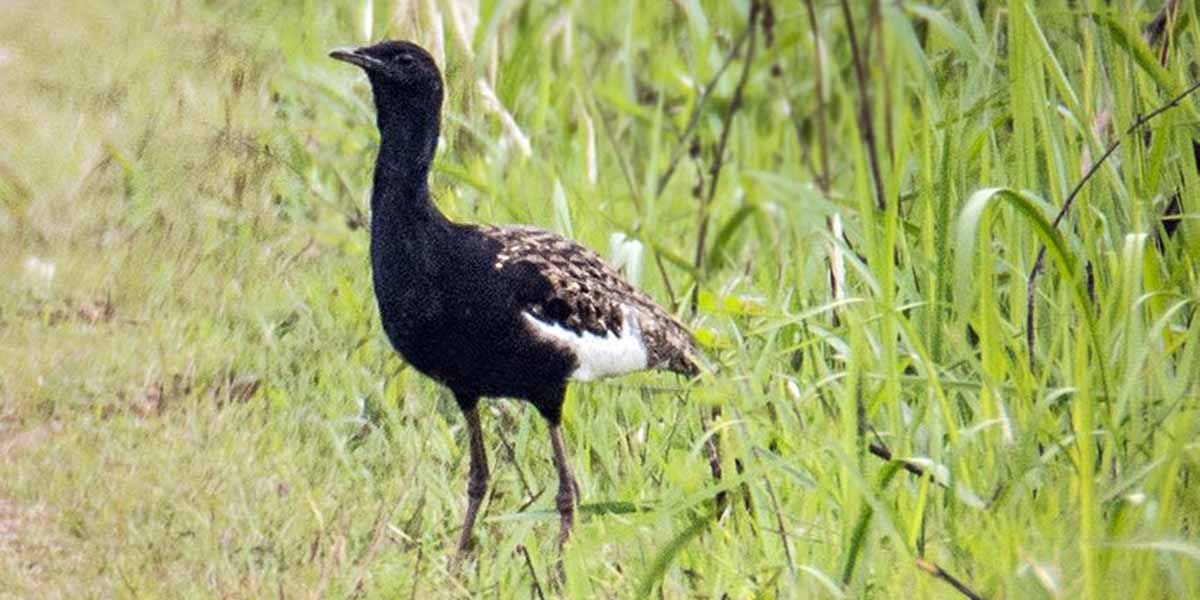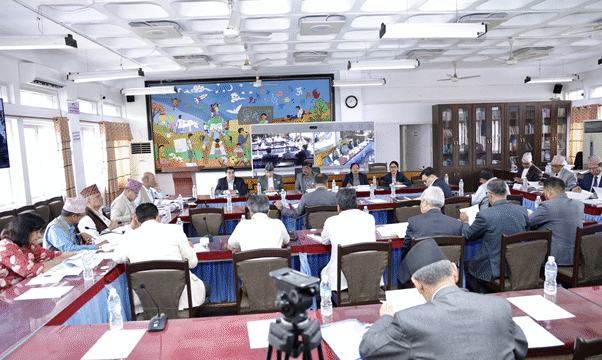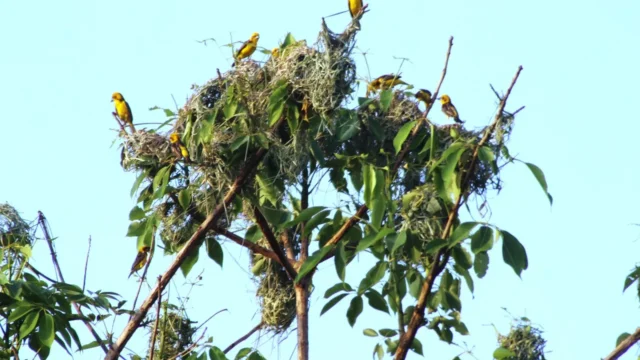Efforts to conserve the critically endangered Great Indian Bustard, locally known as “Kharmujur,” have led to the initiation of grassland management outside the Shuklaphanta National Park. The Bird Conservation Nepal (BCN), under the USAID-funded Paani Project, has begun managing natural grasslands in Belouri, Punarbas Municipality, Beldandi, and Laljhadi Rural Municipality.
According to Hirulal Dagoura, a bird conservationist from BCN, the grassland management efforts are focused on areas like Ultanpur, Nandagaun, and Kisan buffer zones. Unnecessary grass and shrubs have been cleared from these areas. Although the bustards migrate to the grasslands inside the park during the breeding season, they move outside the park afterward. To address this migration pattern, the management of grasslands in the park’s periphery is crucial.
Dagoura emphasized the importance of restoring and improving these habitats, as the degradation of grasslands has led to a decline in the bustard population each year. Alongside grassland management, the conservation team has engaged local residents, youth networks, community forest officials, women’s groups, and local representatives in discussions, training, and awareness programs to protect the bustard’s habitat.
A total of 577 individuals from 12 communities and 140 youth members from four municipalities have received training on bustard conservation. Additionally, four workshops on nature and bird tourism and specific training for 37 Shuklaphanta National Park employees have been conducted.
To aid in the monitoring and research of the bustard population, a survey protocol has been developed. The first survey conducted in Shuklaphanta National Park in 1982 recorded 14 to 15 bustards. However, subsequent surveys showed a sharp decline in their numbers, with only 12 birds recorded in 2000, eight in 2014, seven in 2021, and just five in 2023.
The Great Indian Bustard prefers to inhabit grasslands with species like Siru, Kans, and Khadai. They favor short grasslands for foraging but move to taller grasslands during the breeding season. Despite their visibility in dry grasslands and fields after the breeding season, little is known about their post-breeding habitats.
The bustards are typically active during the early morning and late evening, as they forage for food. Being omnivores, they consume insects, small reptiles, and fruits. While they are generally solitary birds, they form pairs during the breeding season. The breeding season usually lasts from March to May, during which the male bustards perform a courtship dance to attract females. Females lay one to two eggs in tall grasslands, and incubation lasts about four weeks.
The Great Indian Bustard is an endemic bird of the grasslands in the Terai region of Nepal. The female bustards are slightly larger than the males, with a body length of 66 to 68 centimeters and a weight of 1.7 to 1.9 kilograms, while males have a body length of 62 to 64 centimeters and weigh 1.2 to 1.5 kilograms. The male bustards are characterized by black heads, necks, and upper parts, with white wings, making them easily distinguishable in flight. In contrast, the females and juveniles are brownish-gray to sandy in color.
In Nepal, the Great Indian Bustard is found in protected areas such as Koshi Tappu Wildlife Reserve, Chitwan National Park, Bardia National Park, and Shuklaphanta Wildlife Reserve. Outside Nepal, this rare bird is found only in India and Cambodia. It has become extinct in Vietnam and Bangladesh, according to conservationist Dagoura. The Department of National Parks and Wildlife Conservation has classified the Great Indian Bustard as critically endangered both globally and in Nepal.






